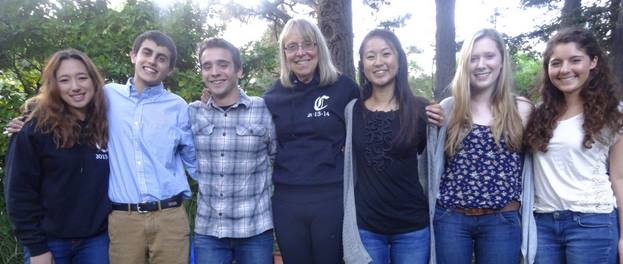“BEYOND CONTROLLING THE CLASS” PART II ::: T.R.I.C.K. = RESPECT, INDEPENDENCE, COLLABORATION, and KIND-NESS
In an earlier post, I wrote about master teacher Esther Wojcicki’s “secret sauce” for working with her students: the acronym “T.R.I.C.K.,” standing for Trust, Respect, Independence, Collaboration and Kindness. In that post I quoted what she has written, in her book Moonshots in Education, about Trust.
Here is what Esther has written about the other parts of her incredibly helpful “T.R.I.C.K.” acronym:
RESPECT
”Teachers must respect their students, especially in today’s world, where class members may come from different backgrounds and experiences. Each student has unique gifts, even if here she also has unique problems. As a teacher, I know how difficult it can be to respect students to create problems in the classroom, but the teacher must show respect. It helps students to feel better about themselves.
Respect is part of trust. I trust my kids and respect them, and, in turn, they trust and respect me. Someone must start the process, and it cannot be the students since the teacher is in charge period
INDEPENDENCE
We all like independence. For most children, the desire for independence starts at age 2 — they want to do everything themselves, to their parents’ chagrin. In elementary school, students want to be independent, too, but as they progress, they become more dependent on the teacher. By high school— if talk via the old model— They are waiting to be told what to do. But high school is a time when the students strive for independence should peek. Teachers can encourage this drive by giving students an opportunity to devise their own projects within defined guidelines. For example, students could have a writing assignment in which they pick the topic. It could be a restaurant review, with each student reviewing a restaurant of his or her choice.
COLLABORATION
Collaboration is an important part of the culture of the blended classroom. Students love to work with peers, especially when working on a project they selected. The main attraction of school for most students is peer contact. If students make the environment of a friendly, collaborative workspace where students feel comfortable, more learning happens.
KINDNESS
The importance of kindness is self evident. If students feel that the teacher is kind, they want to learn. I recall many instances of being kind to students who made mistakes. It paid off. The students were grateful, because it made them feel relaxed and excepted. Being kind not only in school, but in life in general, makes the difference. As American religious leader William JH Bacher put it, ”Your greatness is measured by your kindness; your education and intellect by your modesty; your ignorance is betrayed by your suspicions and prejudices, and your real caliber is measured by the consideration and tolerance you have for others.”

